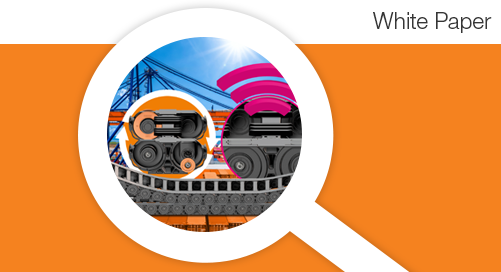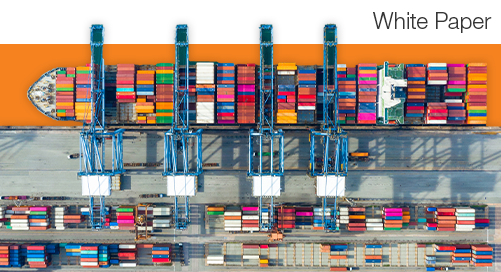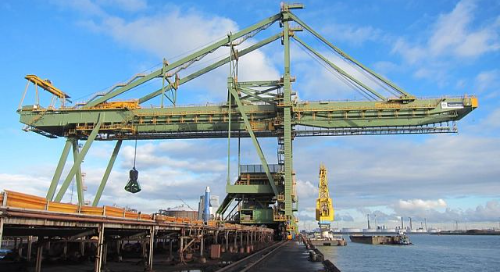Types of port cranes: functions, comparisons, and how to choose
Cranes are an essential part of any port. Without them, the transport of cargo would be effectively impossible. But you may be surprised at just how many different types and sizes of port cranes exist. This blog will explore these variations of port cranes and what differentiates them from each other.
What is the primary function of a port crane?
Port cranes serve a relatively simple, but critical, purpose: handling and transporting shipping containers to and from ships and throughout a terminal. This is true across all port cranes, regardless of the specific variant.
Types of port cranes
Most port cranes fall under the umbrella of gantry cranes. These are heavy duty cranes that are built on top of a gantry frame. Spreader Bars are suspended from the gantry and used to pick up containers by latching on to the corners of the containers via a standardized twist lock system.
Among gantry cranes, there are a few main variations of crane. This blog will cover rubber-tired gantry (RTG) cranes, rail-mounted gantry (RMG) cranes, automatic stacking cranes (ASC) and ship to shore (STS) cranes.
How to choose a port crane
Selecting the right crane for your particular port is vital. Consider these key factors:
Cargo Type
- Bulk Goods (Coal, Grain): Continuous unloaders, grab cranes.
- Containers: Ship-to-shore (STS), rail-mounted gantry (RMG) cranes.
- Heavy-Lift: Heavy-lift cranes with high capacity.
- Key takeaway: Match the crane to the primary cargo.
Port Size & Layout
- Small Ports: Mobile harbor cranes (flexible, versatile).
- Large Ports: Specialized STS cranes (for large container ships).
- Consider: Quay length, water depth, vessel size, crane reach, and footprint.
Automation Needs
- Fully Automated: Automated STS cranes, automated stacking cranes (ASCs) - for high efficiency and reduced labor.
- Manual Operation: May suffice for less demanding needs.
- Think long-term: Align automation with budget and efficiency goals.
White Paper: Digitally networked energy chains enhance STS cranes in the Port of Rotterdam
Rubber-tired gantry cranes
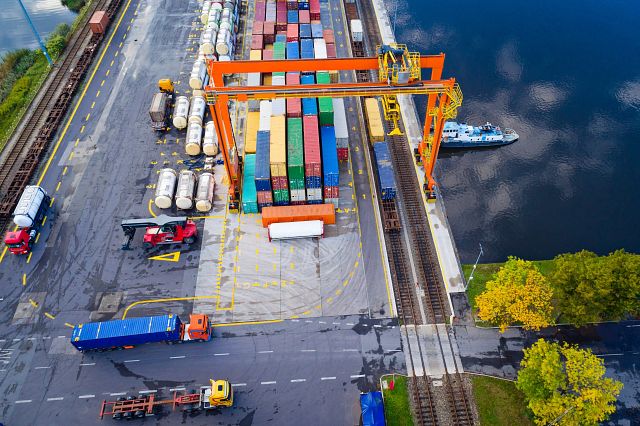 RTG’s are gantry cranes outfitted with rubber tires for unimpeded movement around the container yard. They primarily move and stack containers throughout the port after the containers have been unloaded from ships or to stage containers in preparation of loading operations. Power is provided typically with a diesel engine, although fully electric versions are becoming common. Power and control to the gantry hoist is primarily routed through cable carriers like an igus e-chain® system. An operator is needed to operate the crane, but automated options have existed since 2013.
RTG’s are gantry cranes outfitted with rubber tires for unimpeded movement around the container yard. They primarily move and stack containers throughout the port after the containers have been unloaded from ships or to stage containers in preparation of loading operations. Power is provided typically with a diesel engine, although fully electric versions are becoming common. Power and control to the gantry hoist is primarily routed through cable carriers like an igus e-chain® system. An operator is needed to operate the crane, but automated options have existed since 2013.
Rail mounted gantry cranes
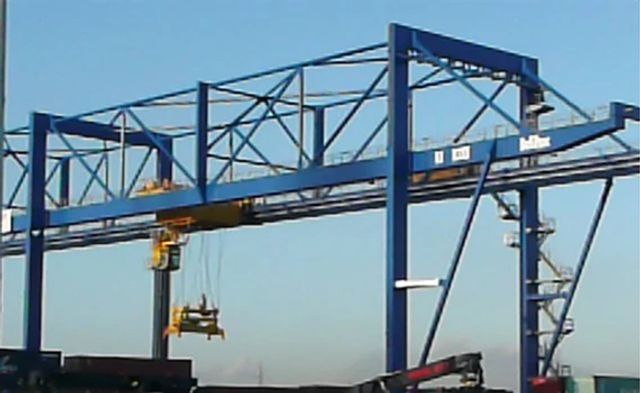 RMG’s are very similar to RTG’s, with the biggest difference being the use of rails for movement rather than free movement with tires. Non-cantilever, single and double cantilever options are all possible. They’re often larger than RTG cranes and require more robust data communication capabilities due to additional onboard equipment and automation functionality. Like an RTG, power and control to the gantry hoist is primarily routed through cable management systems like festoons or an igus e-chain® system. Typically, RMG’s can handle stacks of three to four containers high and six rows wide.
RMG’s are very similar to RTG’s, with the biggest difference being the use of rails for movement rather than free movement with tires. Non-cantilever, single and double cantilever options are all possible. They’re often larger than RTG cranes and require more robust data communication capabilities due to additional onboard equipment and automation functionality. Like an RTG, power and control to the gantry hoist is primarily routed through cable management systems like festoons or an igus e-chain® system. Typically, RMG’s can handle stacks of three to four containers high and six rows wide.
Related: Jib crane cable management: What's the best solution?
Automatic stacking cranes
ASC’s are essentially fully automated RMG’s without an operator. They’re both gantry cranes that utilize rail mounted movement and are available in similar sizes. The major difference between the two is that ASC’s are fully automated, improving their efficiency and overall productivity. This makes them ideal for large terminals that require high throughput and stacking density.
Ship-to-shore cranes
STS cranes — sometimes referred to as quay cranes — are typically the largest of port gantry cranes and are used to load and unload containers from ships the shore or berth. This limits them to being installed along the waterside on rails spanning the length of the berth.
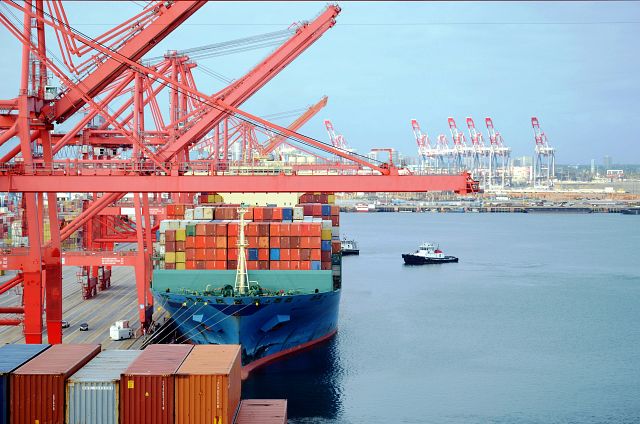
There are two main types of ship-to-shore cranes: low profile and high profile. Low profile STS cranes have a non-pivoting telescopic boom that extends out from the crane and over ships, where it’s used to load and unload the vessels. High profile STS cranes have a hinged boom that makes navigation easier for ships during berthing.
Deck cranes
Deck cranes are cranes outfitted on the deck of a ship. These cranes are most often used to load and unload cargo, move materials and equipment around the ship, as well as potentially rescue people from the water. Deck cranes typically use hydraulics for power.
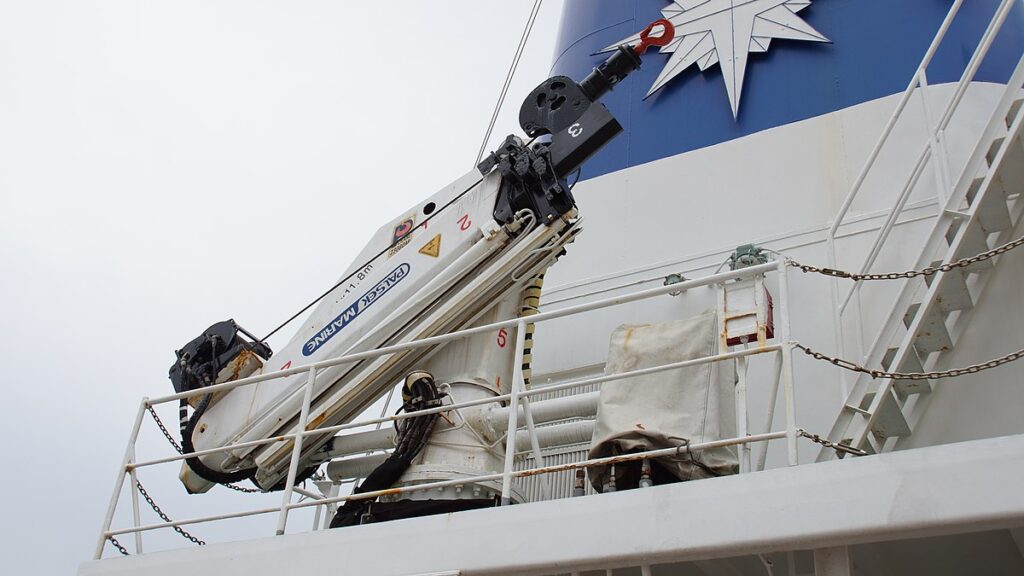
Multiple different types of cranes can be used as deck cranes, with the most common being boom and jib cranes. This is due to their compact size and versatility.
Crane barges
Crane barges, also known as floating cranes, are heavy-duty cranes installed atop a barge. This allows the crane to be used in offshore environments and move across the water with ease. While similar to deck cranes, crane barges differ in that they are not used for any other purpose — unlike the vessels that house deck cranes — and are suited for much heavier loads.
Crane barges are capable of handling loads of hundreds — if not thousands — of tons. To counteract such heavy loads and maintain stability, ballast tanks on the barge can be filled with water — in some cases millions of gallons. Floating cranes are essential in port construction, where logistics make it difficult for land-based cranes to be used effectively.
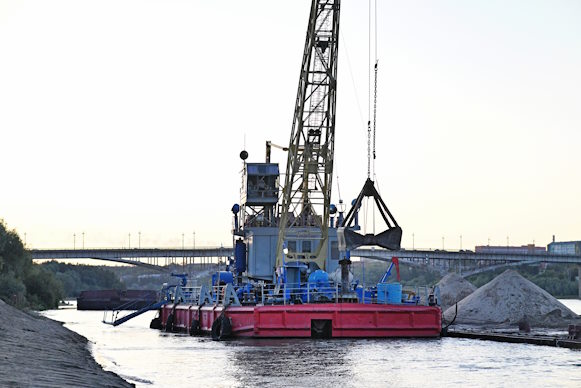
Tower cranes
Tower cranes are one of the most recognizable types of port crane, due to their height and size. Some tower cranes are as tall as 1,000 meters, with load capacity ranging anywhere from two tons to over 100 tons.
In essence, tower cranes are extremely large jib cranes, consisting of a base where the tower is mounted, with a working arm (jib) at the top of the tower that can rotate a full 360-degrees. At the opposite end of the working arm is a counter jib, which provides balance to the crane with a counterweight. A lifting hook runs along the working arm horizontally for positioning, and moves vertically to lift and lower loads.
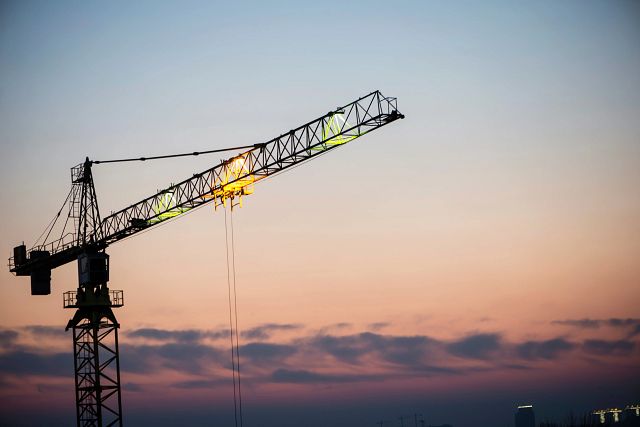
Reach stackers
Reach stackers, often used in small and medium-sized ports, is a vehicle used to transport shipping containers. This is done with a large lifting cradle that grabs each end of the shipping container.
Reach stackers offer a high level of flexibility, and can stack containers more effectively than their closest “relative”, forklifts. The extended reach of reach stackers means they can store containers four deep.
There’s a subclass of reach stackers, called “empty stackers”. These are reach stackers that can only handle empty shipping containers, but do so quickly and efficiently.
Level luffing cranes
Level luffing cranes are a unique crane that moves its loading hook horizontally, rather than vertically. This is done with a horse-head jib, which is a jib with an added section at the top. This added section keeps the hook level with a carefully designed pivot point that flexes up as the hook moves in and down as the hook moves out.
Level luffing cranes are most often used in shipbuilding and loading/unloading ships when a load needs to be kept near ground level while still moved with a high level of precision.
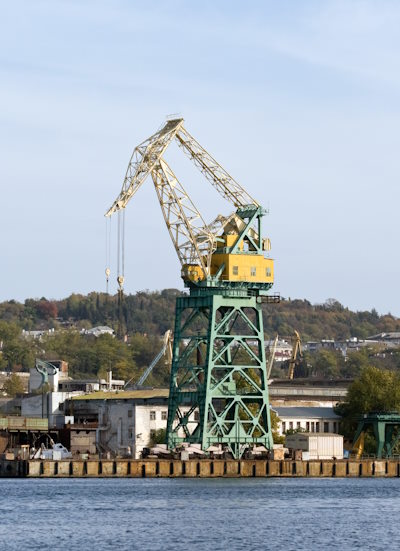
Additional classifications
While cranes can be classified by their structure and design, they are often also classified by their lifting capacity and reach, particularly for use in ports. These classifications are panamax, post panamax, and super post panamax.
Panamax cranes
Panamax cranes are those capable of fully loading and unloading panamax ships — which are those that are capable of traveling through the original Panama Canal. The booms of panamax cranes therefore need to have a reach of 13 container rows, and they need to be capable of lifting to a height of roughly 38 meters.
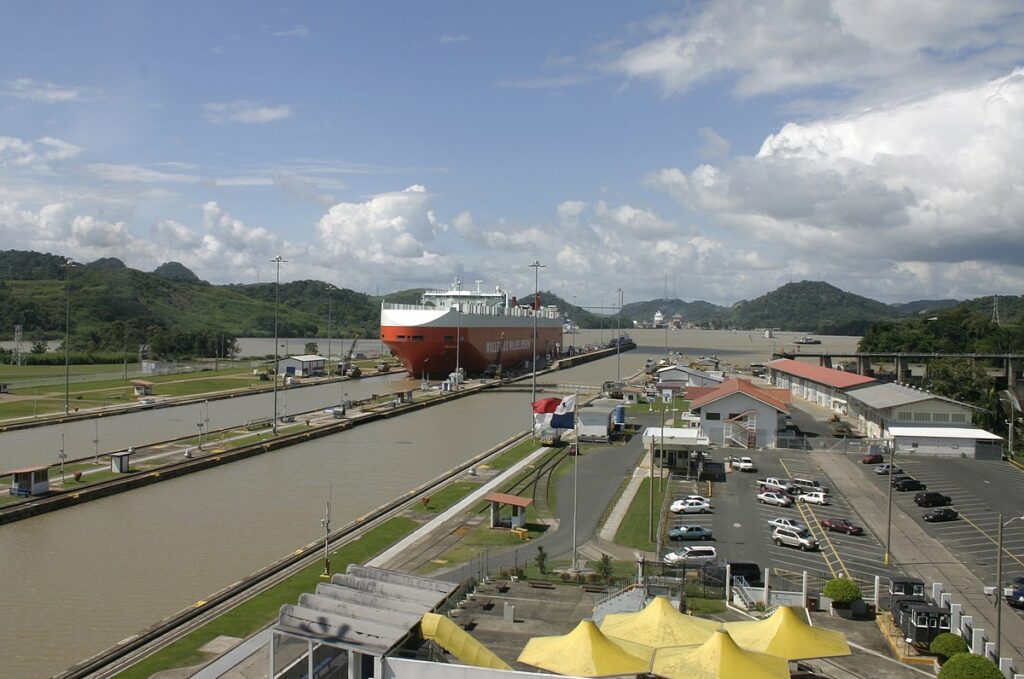
Post panamax cranes
Post panamax cranes are designed to unload ships that are too wide to pass through the original Panama Canal, but are under the maximum width of the widened Panama Canal. These cranes need tohave a reach of 16 container rows to completely unload post panamax ships. Their lifting height is between 30–35 meters, and they have a lifting capacity between 40–50 tons.
Super post panamax cranes
Cranes larger than the maximum post panamax sizes are known as super post panamax cranes. These are by far the largest port cranes, with the largest having a reach of 25 container rows. Super post panamax cranes often have a lifting capacity of at least 65 tons, but newer cranes can handle 100+ tons.
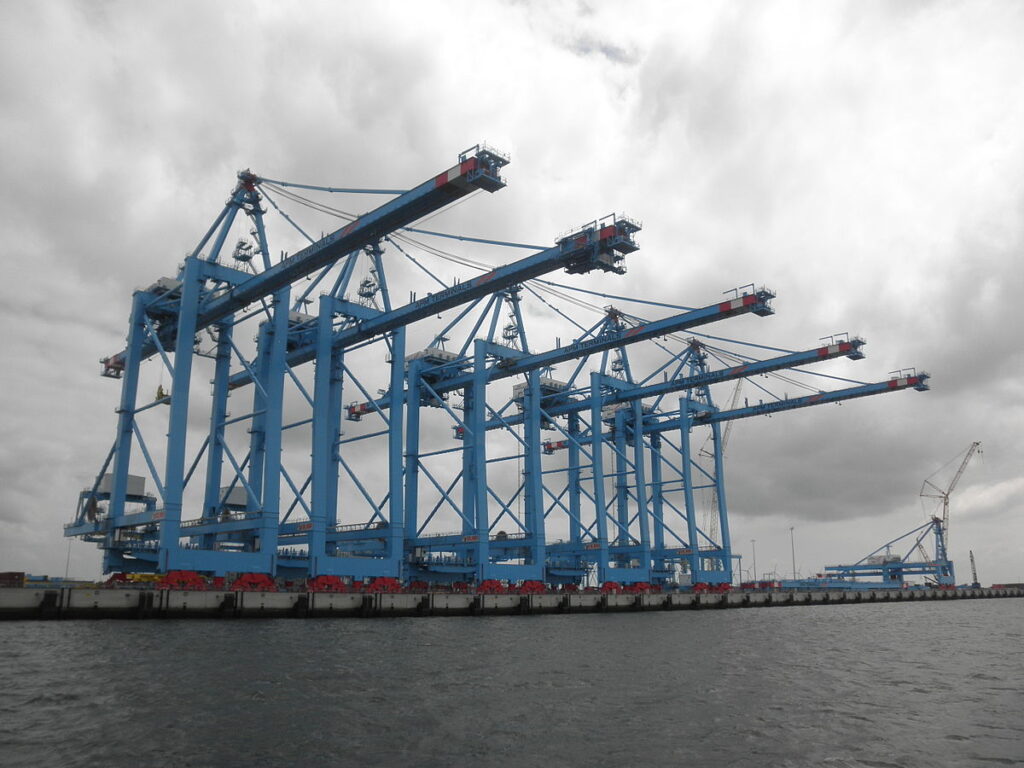
Conclusion
At just about any port, you’ll find some combination of most, if not all, of the cranes discussed in this blog. Without them, productivity would grind to a halt. Understanding the differences between the various types of port cranes is essential to choosing the proper cranes for your own applications and maximizing efficiency.
Questions about power and data supply for port cranes? Contact an e-chain expert for cable management-related inquiries, or a chainflex cables expert for power and data cable information.

